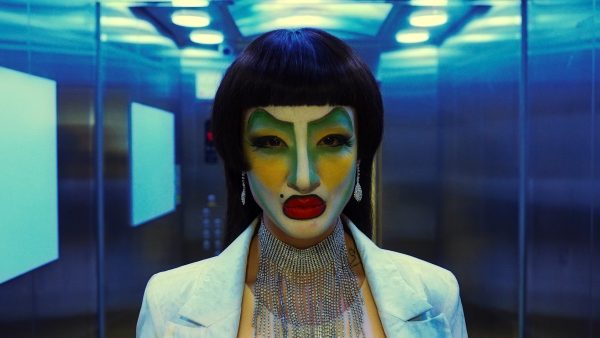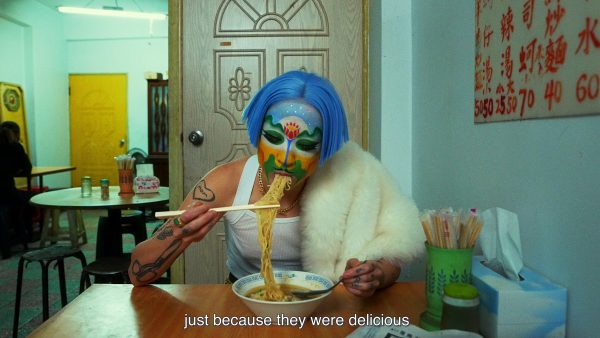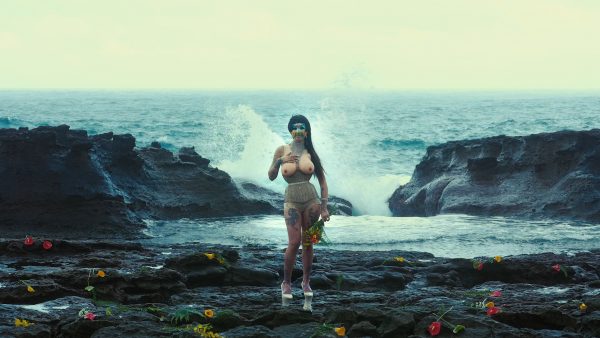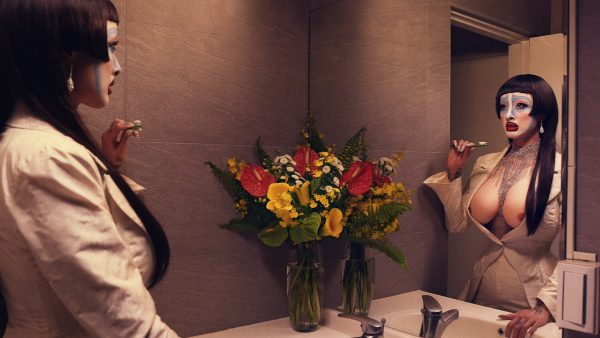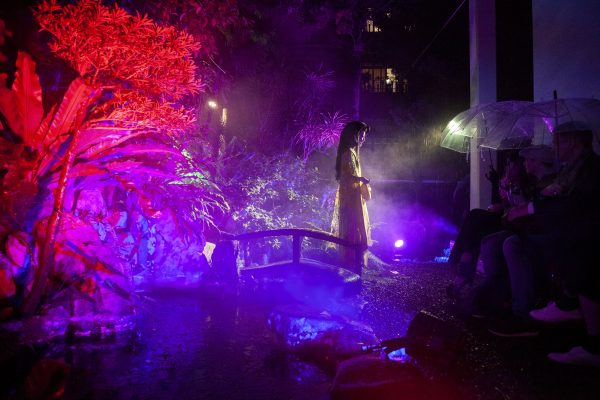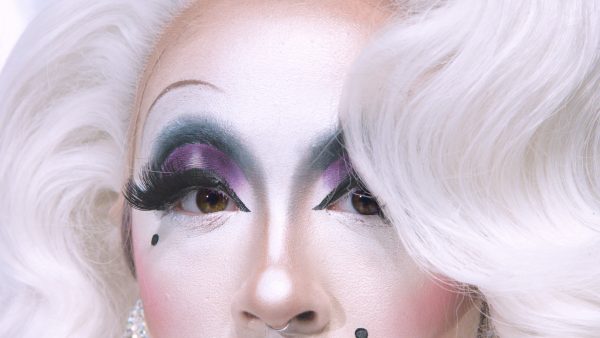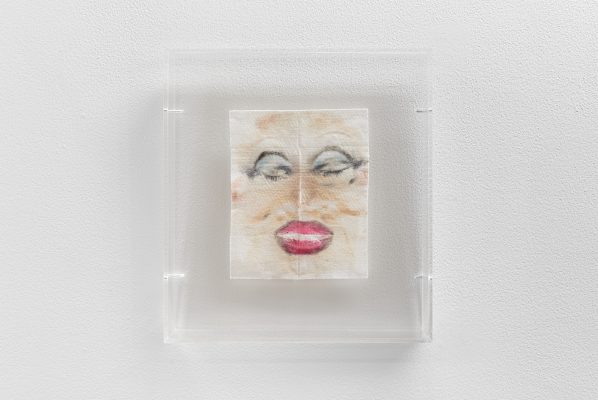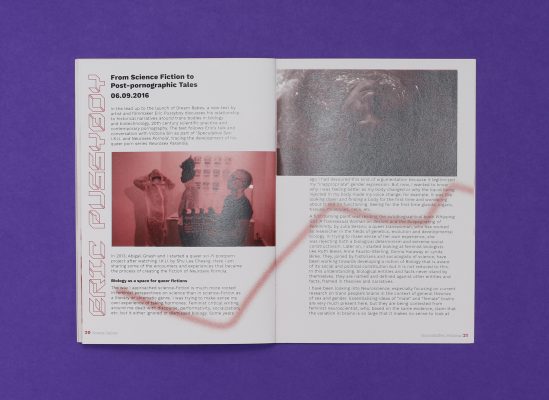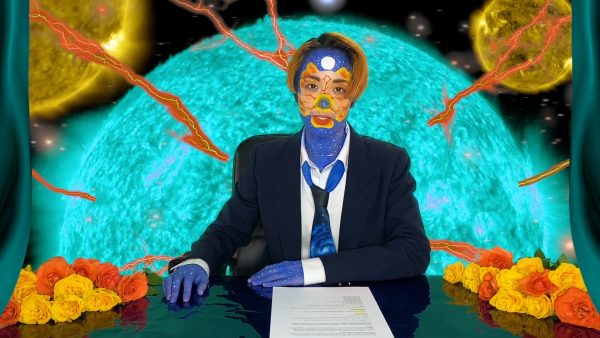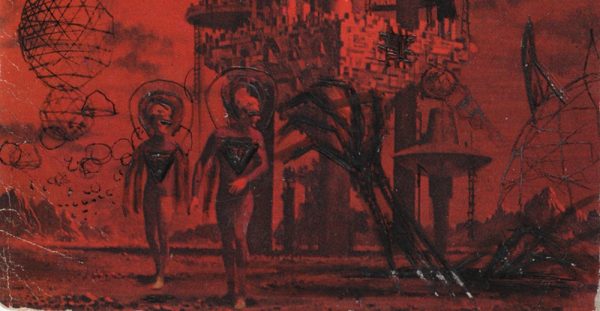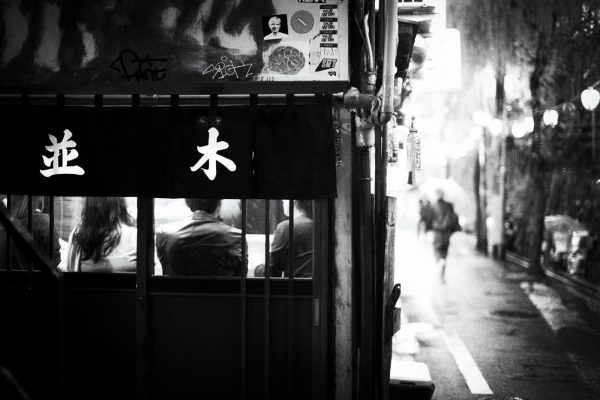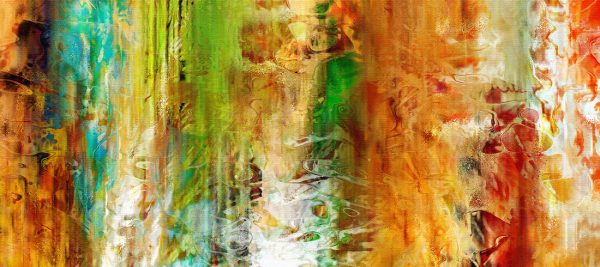During a performance of A View From Elsewhere (2019), Toronto-born artist Sin Wai Kin wore a floor length gown with matching evening gloves. As the fantasy in three acts unfolded, one side of their mouth transformed into a smirk. The performance was characterised by an unapologetic exhaustion as Sin Wai Kin lip-synced over a provocative track about the demands of the audiences’ gaze: ‘She’s here…. So, go on, look at her.’
Sin Wai Kin, formerly known as Victoria Sin, identifies as non-binary. Their performances ply apart femininity in order to expose gender as an elaborate social construct – a comedic opera of many composite parts, reliant on myth, performance and spectatorship.
In their latest work, a film titled A Dream of Wholeness in Parts (2021), influenced by Cantonese opera, Sin Wai Kin toys with – and queers – tradition. They appear as several characters at once, presenting interpretations of Cantonese operatic archetypes. One such character is The Universe, a reinterpretation of the Zing (warrior) role, appearing in a diamanté belt with the letters ‘R’, ‘E’, ‘A’, ‘L’ brandished across the waist – a nod to the ways in which Sin Wai Kin’s practice both mocks and heralds language as a technology for truth production. Actuality is regarded as just another lacklustre accessory.
In the past year, Sin Wai Kin’s performances have taken the form of virtual commissions, such as Total Fabrication (2020), a short film published on the Guggenheim’s Works and Process YouTube channel. In this three-minute clip, Sin Wai Kin dons a rainbow-shaped moustache, their face bearing a striking resemblance to iconic filmmaker John Waters. They then lip-sync to a track that troubles the distinction between news and performance, fact and invention.
When I meet Sin Wai Kin over Zoom, they sit in front of a floor-to-ceiling mirror at home in London. The reflection revealed a reproduction of the Mona Lisa in a small gold frame, on a wall behind the screen. A print of Botticelli’s The Birth of Venus was affixed nearby. As Sin Wai Kin spoke of their interests in performance, fiction and disguise, I began to think of these images as confrontations with the Western canon. In their literalised ‘body’ of work, paint is applied to the skin and faces are made up. When I expressed my desire for a virtual studio tour, Sin Wai Kin said there was no need: ‘I carry it with me all of the time’.
